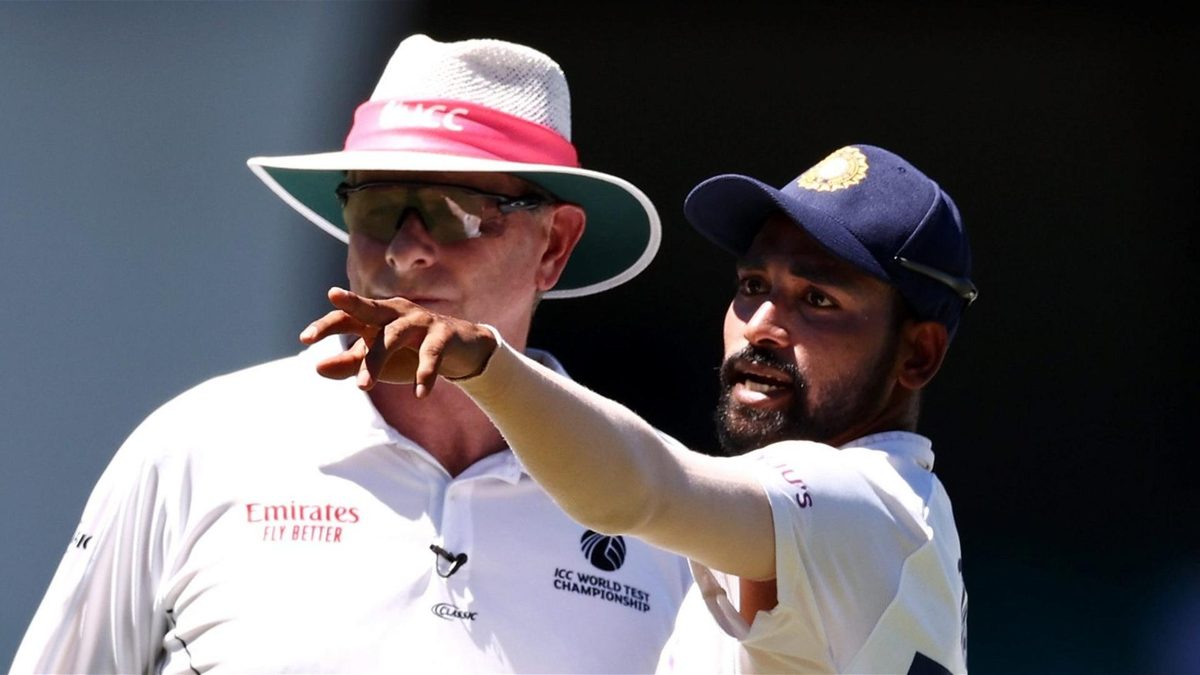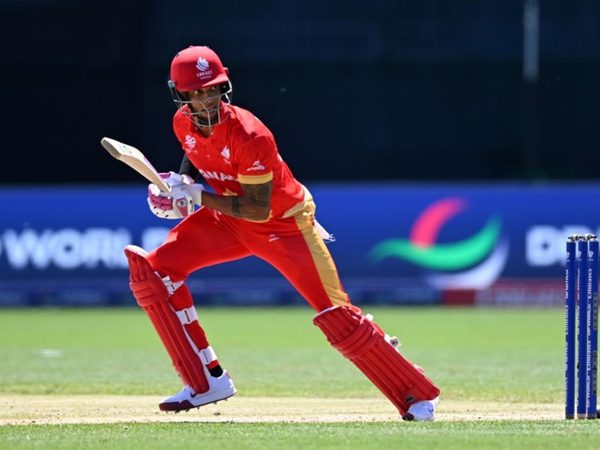
It feels surreal that play is still continuing at the SCG, that a Test match still continues to run its course despite the events in the afternoon session on day four.
For all that this has been one of the most high-octane, high-quality, and highly charged Test series in recent memory, the most impactful passage contained within it by far extended for only eight minutes, in which time not a single ball was bowled.
The day had drifted along until then, with Australia cagey and cautious in the morning session despite a big lead before taking a more aggressive approach after lunch. Cameron Green had just plundered Mohammed Siraj for consecutive sixes to bring an end to the 86th over, before the junior quick re-took his place on the boundary.
And then it happened. Siraj, accompanied by his captain Ajinkya Rahane, started a lengthy discussion with the umpires, who then walked across to the crowd behind where Siraj had been stationed. Security officials got involved, attempting to ascertain what had happened, before six men, clad in various combinations of masks, sombreros and floral shirts, were escorted from their seats. Play resumed.
The immediate context is the racist abuse India alleged had been sent the way of Siraj and Jasprit Bumrah on day three, and while it is not confirmed what the nature of today’s incident was, Cricket Australia was quick to reaffirm its “zero-tolerance policy” towards discriminatory behaviour.
Whatever it turns out has transpired, it’s long past time that cricket properly faced up to its relationship with abusive language and behaviour, from the players on the field and the fans off it. For Australia, it was a tactic for more than a decade, termed ‘mental disintegration’, with their insistence on knowing where the line is often jarring with reality, and other countries have often followed suit. For sections of spectators all over the world, forking out an often-exorbitant fee for a front-row seat is interpreted as a license to hurl bile for hours on end. An incident in which Jofra Archer was racially abused in a series in New Zealand last winter carries saddening similarities to this one, but really you could find several examples, and countless more will have gone unreported too.
This is, to an extent, a nuanced issue. While it goes without saying that any racist abuse is abhorrent and unacceptable, it is part of the theatre of top-level sport for a player to defy the baying of a partisan crowd, to shut out the noise and emerge triumphant. On-field chatter can veer into nasty territory, but it can also add colour to a game ever grappling to shed a stuffy image. And yet, no sport offers opportunity for sustained spectator bullying quite like cricket. The design of stadia can leave a fielder on the rope firmly in ear shot of the stands, and long days in the field can lead to six hours of continuous heckling.
Players are told this is part of the deal, the contract they enter into. They shouldn’t bite back or complain for fear of showing weakness. Instead they should tolerate it, bury it, try to forget it. It’s advice that rings increasingly hollow in a game finally waking up to its responsibility to care for its players’ mental health. It’s a conversation that needs to be had, because what should count as unacceptable goes beyond what is discriminatory, but falls short of any negative comment from a fan to a player.
The wider context should be clear to anyone who’s turned on a news channel in the past six days or six months. Racism is a disease which continues to extend its divisive tendrils across the world, and cricket is far from immune. In England, we’ve seen allegations of institutional racism made against both Yorkshire – its most prestigious club – and the ECB, its governing body. In India, Darren Sammy came to the heartbreaking realisation that a nickname he thought was a term of endearment was routed in colourism.
The Black Lives Matter movement, which cricket was quick to show its support for but also quick to let fade into the background, shows both how far the evil has spread throughout all areas of society and how the time for letting the hurt and pain come silently is passed. In the USA, an attempted white nationalist coup in the name of a far-right president shows the dangers of failing to challenge racism adequately. These constitute the big picture, but incidents such as those at Sydney make up part of the same cloth.
And so to Siraj, a 26-year-old playing just his second Test match, who decided to take a stand. He has already shown himself to be a player who keeps his emotion close to the surface, and who is able to summon the courage necessary to overcome tragedy and excel himself anyway. As a junior member of the side, the temptation would be there to push down any side of weakness, to ignore what’s being said and keep his head low. A break in play will come soon, he could have thought. Push through until then, and forget whatever has happened.
Instead, twice, he chose not to accede to the racists and abusers, to say his piece and demand action, with the backing of the increasingly impressive Rahane. In a way, there’s a sadness in the fact that the responsibility for fighting discrimination falls on those most affected by it, but that’s why Siraj’s bravery must not go in vain.
He has shown that only a true no-tolerance approach is enough, that any instance of racism or abuse must be challenged there and then, unless it be allowed to fester and persist. That goes for the spectator who hears someone two seats down overstepping the line, for the man in the pub whose friend tells a racist joke, and for the organisations who allow discriminatory structures and practices to continue. With Siraj having shown the way, it’s up to everyone else to follow his example.








